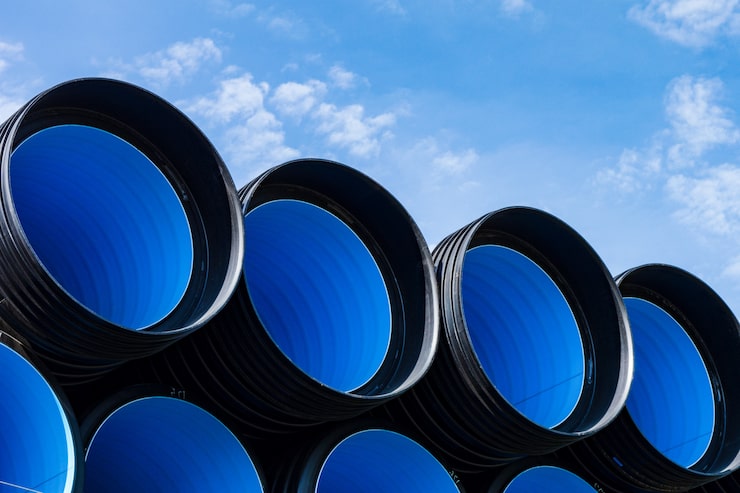When working with plastic piping systems, many professionals ask can you fuse an HDPE pipe. High-Density Polyethylene (HDPE) has become one of the most widely used materials for transporting water, gas, sewage, and industrial fluids. Its success comes from its lightweight structure, chemical resistance, and durability under pressure. However, unlike metal pipes that can be threaded, soldered, or welded with filler rods, HDPE requires specialized fusion techniques. These techniques allow installers to create seamless connections that match or exceed the strength of the original pipe material.
The process of fusing HDPE pipes is based on heat and pressure. Instead of relying on adhesives or gaskets, the ends of the pipe are softened with controlled heating and then pressed together until the material bonds into one continuous piece. Once cooled, the joint is leak-free and strong enough to handle demanding conditions underground or above ground. This feature makes fusion the preferred method for critical systems such as municipal water supply and gas distribution, where long-term performance is non-negotiable.

One of the most common methods is butt fusion welding. This technique involves placing two pipe ends against a heated plate until the material reaches the right melting point. The plate is then removed, and the molten surfaces are pressed together with steady pressure. As the joint cools, it forms a permanent connection that is virtually indistinguishable from the rest of the pipe. Contractors often rely on butt fusion for large-diameter pipelines because it creates continuous runs with minimal weak points. It is especially valuable in projects where long sections of pipe are laid in challenging environments such as under roads, rivers, or industrial sites.
Another important technique is electrofusion welding. Instead of heating the pipe ends directly, this method uses specialized fittings with built-in heating coils. When an electrical current is applied, the coils heat the inside of the fitting and the outer surface of the pipe, causing them to melt and bond. Electrofusion is widely used in gas distribution networks and confined installation areas, such as trenches, where it is difficult to operate large fusion equipment. The precision and reliability of this method make it attractive for projects that demand strict safety standards, though the fittings can add to overall costs.
For smaller pipe sizes, many installers use socket fusion welding. In this method, the outside of the pipe and the inside of the fitting are heated at the same time using a fusion tool. Once softened, they are quickly joined together, forming a tight, durable bond. Socket fusion requires less equipment compared to butt fusion and is faster to perform on smaller-diameter systems. It is commonly seen in residential or light commercial applications where efficiency is important but the system still needs long-term reliability.
In specialized applications, extrusion welding may be used, particularly in fabrications rather than long pipelines. This technique involves melting a filler material and applying it along the joint with pressure, bonding it to the pipe surface. While not the primary method for installing pipelines, extrusion welding is useful for repairing damaged pipes, fabricating custom tanks, or joining HDPE sheets. For contractors dealing with irregular structures or unique designs, extrusion welding provides flexibility that other methods cannot.
The decision to fuse HDPE pipe is influenced not only by pipe diameter and project scale but also by environmental conditions and site constraints. For example, in very cold weather, butt fusion requires extra care to maintain proper heating, sometimes using protective tents or insulated enclosures. Electrofusion, on the other hand, can be easier to control in variable conditions because the heating is localized within the fitting. Contractors must evaluate site-specific factors before choosing the most suitable fusion method.
A critical element in any fusion process is quality control. For butt fusion, proper alignment, surface preparation, and cooling time must be respected to avoid weak joints. For electrofusion, cleaning and scraping the pipe ends are essential steps to remove oxidation and ensure proper bonding. Small errors in preparation can significantly affect the final joint strength, which is why operator training and adherence to standards are mandatory. Industries such as gas distribution also require inspections like pressure testing or non-destructive evaluation to verify that joints meet performance requirements.
Fusion not only provides technical reliability but also long-term economic benefits. The initial investment in fusion equipment and training may appear significant, but the long service life of HDPE systems offsets these costs. Because fused joints resist corrosion, rust, and chemical degradation, maintenance requirements are minimal. For municipalities and companies managing buried pipelines, this translates to fewer disruptions, lower repair costs, and more consistent service delivery. Over decades of operation, the savings in maintenance can be substantial.
Another advantage of HDPE fusion is its contribution to sustainability. Leak-free joints reduce water loss in supply networks and help conserve valuable resources. In energy transport systems, minimizing leakage also reduces safety risks and environmental impacts. As industries worldwide place greater emphasis on sustainability, the use of fused HDPE systems aligns with goals of efficiency and environmental protection.
For industries such as municipal water management, mining operations, or industrial processing, the ability to fuse HDPE pipe reliably makes it possible to design infrastructure that meets both current demands and future growth. When fusion methods are applied with the right equipment, standards, and training, the resulting pipelines can perform for decades with little need for intervention. As technology advances, fusion machines and fittings are becoming more precise, portable, and efficient, opening the way for even broader adoption of HDPE in large-scale projects around the world.


